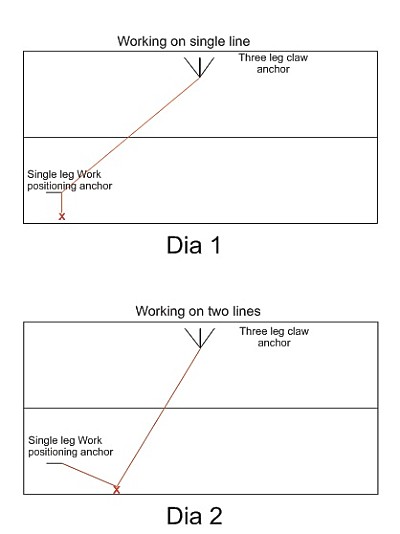Claw Anchor Installation
Safetor Roof Anchors are No. 1 when it comes to height safety anchor points.
About the Safetor Claw Anchor
Supplied in the anchor kit are two anchors. One has three adjustable legs and the other has only one adjustable leg. The anchor with the three adjustable legs is the main anchor that supports the full restraint load of a person when working. The anchor with the single adjustable leg is the work positioning part of the anchor system.
NB: When the anchor is in place all legs should be adjusted up tight. Diagram 1. Shows working on a single line. This method is used when working in one place.NB: By using only a single line the work positioning anchor will have to be moved as you work.
Diagram 2. Shows working off two lines. This method is used when moving around the roof. You are attached between two anchor points thus removing the pendulum effect. This method is best used when painting a roof, cleaning out gutters or replacing a roof. (In some cases you may need a second single leg anchor on the other end of the roof.)

NB:
It is the responsibility of the user to ensure the structure to which the anchor is attached will support the loading required. If in any doubt about the structural adequacy, consult a qualified person such as a professional structural engineer. All anchor points need to be inspected before and after use for any signs of damage. If damage occurs the anchor will need to be replaced. Anchor points should only be installed and used by trained persons.